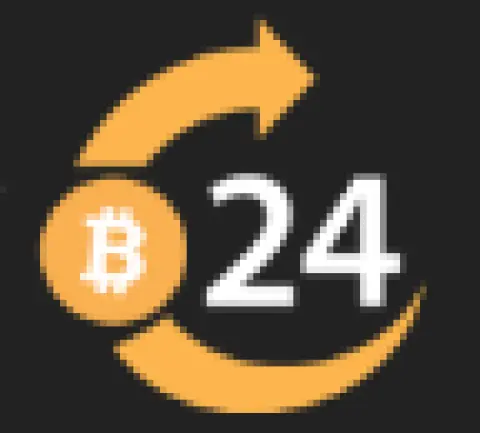Table of Contents:
Understanding Non-Custodial Crypto Wallets: Core Principles and Benefits
Non-custodial crypto wallets put the user in the driver’s seat—literally. At their core, these wallets are built around a simple but powerful principle: you alone hold the keys to your digital assets. There’s no third-party gatekeeper, no centralized authority, and no reset button if you lose access. This isn’t just a technical distinction; it’s a philosophical shift in how value is stored and transferred online.
What truly sets non-custodial wallets apart is the architecture. Your private keys are generated and stored locally, never shared with a server or platform. This means your crypto cannot be frozen, seized, or otherwise interfered with by anyone but you. The benefits go beyond mere autonomy:
- True Ownership: You’re not just a user—you’re the sole owner. No one can access, move, or block your funds without your explicit action.
- Global Access, Zero Intermediaries: Whether you’re sending tokens across continents or interacting with decentralized applications, you do so directly, with no middleman slowing you down or charging hidden fees.
- Privacy by Design: Non-custodial wallets often require no personal information to set up. Your identity remains yours, and your transaction history isn’t tied to a central profile.
- Unrestricted Integration: Many of these wallets seamlessly connect to DeFi protocols, NFT marketplaces, and other blockchain-based services, unlocking advanced features not available through custodial solutions.
In essence, non-custodial wallets are more than just a tool—they’re a declaration of independence in the digital age. By holding your own keys, you take full responsibility, but also unlock a level of freedom and flexibility that simply isn’t possible with custodial alternatives.
How Non-Custodial Wallets Empower You: Real-World Control Over Your Crypto
Non-custodial wallets don’t just hand you a set of keys—they hand you the steering wheel. In practical, everyday terms, this means you can:
- Transact on Your Terms: Send, receive, or swap cryptocurrencies instantly, with no approval needed from a bank or platform. You decide when and how to move your funds, 24/7, no questions asked.
- Bypass Restrictions: Travel or live in regions with financial limitations? Non-custodial wallets let you access your crypto anywhere, regardless of local banking rules or political climate. No one can freeze your assets or block your transactions.
- Directly Participate in Blockchain Ecosystems: Engage with decentralized finance (DeFi), stake tokens, or mint NFTs straight from your wallet. You’re not limited by what a centralized provider allows; the entire blockchain is open to you.
- Customize Security: Choose your own backup methods, set your preferred passphrases, and even use multi-signature options. Your wallet, your security setup—no forced standards or weak points imposed by others.
- React Instantly to Market Changes: Spot an opportunity or need to act fast? You’re never waiting for a withdrawal approval or stuck in a support queue. Non-custodial wallets put you in real-time control, so you can seize the moment.
Bottom line: With a non-custodial wallet, you’re not just storing crypto—you’re actively managing it, adapting to your needs, and protecting your assets on your own terms. That’s real-world empowerment, and it’s only possible when you hold the keys yourself.
Non-Custodial Wallet Types: Finding the Right Choice for Your Needs
Choosing the right non-custodial wallet can feel a bit like picking the perfect pair of shoes—function, fit, and style all matter, but your needs drive the decision. Let’s break down the main types, each with its own quirks and strengths, so you can match your wallet to your crypto lifestyle.
-
Mobile Wallets
For those always on the move. These apps live on your smartphone, offering convenience and instant access. Great for daily transactions, but be mindful: your phone’s security is your wallet’s security. -
Desktop Wallets
Ideal for frequent computer users. Installed on your PC or laptop, they offer more features and sometimes deeper integration with advanced blockchain tools. Still, your computer’s vulnerabilities are theirs, too. -
Hardware Wallets
The gold standard for serious security. These physical devices store your keys offline, keeping hackers at bay. Best for storing larger amounts or long-term holdings, though you’ll need to keep the device safe from physical loss or damage. -
Browser Extension Wallets
For web-savvy users and DeFi explorers. These plug right into your browser, making it a breeze to interact with decentralized apps. Quick and handy, but they inherit the risks of your browser environment. -
Pocket (Paper) Wallets
Old-school, but still relevant. Print your keys and store them offline—no electronics involved. Maximum isolation, but zero recovery if you lose the paper.
Each type comes with trade-offs. Consider your habits, the value you’re storing, and how often you need access. Sometimes, mixing wallet types is the smartest move—just like you wouldn’t wear hiking boots to a dinner party.
Private Key Management: Practical Strategies for Maximum Security
Private key management is the linchpin of non-custodial wallet security. If you slip up here, your assets are at risk—no help desk, no undo button. So, what actually works in the real world?
- Offline Backups: Create several physical copies of your private key or recovery phrase. Store them in separate, secure locations—think safe deposit boxes or hidden safes, not under your keyboard.
- Use Durable Materials: Paper fades, burns, or gets soggy. For long-term storage, consider metal backup plates that resist fire, water, and time.
- Split Secrets: For extra safety, split your recovery phrase into parts and store each part in a different place. This way, a single breach won’t expose your entire key.
- Never Digitize Unencrypted: Avoid saving your private key or recovery phrase in plain text on your phone, computer, or cloud. If you must go digital, use strong encryption and unique, complex passwords.
- Regular Checks: Every few months, verify that your backups are still accessible and readable. People forget passwords, safes get moved, and ink fades—don’t get caught off guard.
- Plan for Emergencies: Consider how trusted family or partners could access your keys if something happens to you. Legal arrangements or secure instructions can prevent your assets from becoming permanently inaccessible.
Effective private key management isn’t just about being careful—it’s about being prepared for the unexpected. A little extra effort now can mean total peace of mind later.
Step-by-Step Example: Setting Up and Using a Non-Custodial Wallet
Setting up a non-custodial wallet is surprisingly straightforward, but each step deserves your full attention. Here’s a practical walk-through using a popular mobile wallet as an example:
- Download the Official App: Go to the official website or your device’s app store. Double-check the developer’s name to avoid fake versions—scams are everywhere.
- Install and Launch: Open the app and select “Create New Wallet.” You’ll usually be prompted to set a strong password or PIN. Choose something unique, not your birthday or “1234.”
- Secure Your Recovery Phrase: The app will generate a 12- or 24-word recovery phrase. Write it down by hand—don’t screenshot or email it. Store it somewhere only you can access.
- Confirm the Phrase: Most wallets require you to re-enter the phrase to verify you’ve saved it correctly. This step is critical; don’t rush it.
- Personalize Security Settings: Explore options like biometric unlock, two-factor authentication, or custom timeouts. Adjust these to match your risk tolerance and daily habits.
- Receive Your First Crypto: Find your wallet’s public address and use it to receive a small test amount. This helps you get comfortable with the process before moving larger sums.
- Explore Core Features: Try sending a small transaction, connecting to a decentralized app, or viewing your transaction history. Familiarity now means fewer mistakes later.
Tip: After setup, take a moment to review your backup and security steps. It’s easy to skip, but this habit can save you from headaches down the road.
Avoiding Common Pitfalls: Mistakes to Watch Out for With Non-Custodial Storage
Non-custodial storage offers freedom, but it’s easy to stumble into avoidable traps if you’re not careful. Here’s what often goes wrong—and how to sidestep trouble before it finds you.
- Overlooking Software Authenticity: Downloading wallets from unofficial sources is a recipe for disaster. Always verify URLs and app publishers, and check for fake lookalikes—malware can be almost indistinguishable from the real thing.
- Ignoring Updates: Skipping wallet updates leaves you exposed to bugs and security flaws. Enable notifications or set reminders to keep your software current.
- Falling for Phishing: Phishing attacks are clever—sometimes frighteningly so. Never enter your recovery phrase or private key on websites or forms, no matter how convincing they look. Official wallets will never ask for these details outside your device.
- Using Public Wi-Fi for Transactions: Public networks are hunting grounds for hackers. Avoid sending or receiving crypto when connected to unsecured Wi-Fi, especially in airports or cafes.
- Neglecting Device Hygiene: Viruses and spyware can capture keystrokes or screen data. Regularly scan your devices for malware and avoid installing random apps or browser extensions.
- Sharing Too Much Online: Bragging about your holdings or sharing wallet screenshots on social media can make you a target. Stay discreet about your crypto activities.
- Forgetting About Inheritance: If something happens to you, your assets could be lost forever. Consider a secure, legal way to pass on access—don’t leave loved ones guessing.
Staying vigilant and methodical is your best defense. A little caution now can save you from irreversible mistakes later.
Advanced Use Cases: Accessing DeFi, NFTs, and More With Your Own Wallet
Non-custodial wallets unlock a world of advanced blockchain opportunities that simply aren’t possible with custodial solutions. If you’re ready to go beyond basic storage, here’s how your own wallet becomes a gateway to cutting-edge crypto ecosystems:
- DeFi Protocols: Instantly connect to decentralized exchanges, lending platforms, and yield farms. Swap tokens directly, provide liquidity, or earn interest—no registration, no waiting, just seamless access to global financial tools.
- NFT Marketplaces: Mint, buy, or sell digital collectibles and art. Your wallet lets you interact with NFT platforms, prove ownership, and even display your collection—without relying on a third party to hold your assets.
- DAO Participation: Join decentralized autonomous organizations and vote on proposals using your wallet. Your tokens double as voting power, giving you a real say in project direction and governance.
- Token Launches and Airdrops: Take part in new token offerings or claim airdropped assets directly. Early access often requires a self-custodied wallet—no centralized gatekeepers, just direct eligibility.
- Cross-Chain Bridges: Move assets between different blockchains with your wallet. Interoperability tools let you transfer tokens across networks, opening up even more possibilities for diversification and utility.
With a non-custodial wallet, you’re not just holding crypto—you’re actively participating in the most innovative corners of the blockchain universe, on your own terms.
Mixing Security and Convenience: Should You Combine Wallet Types?
Balancing security and convenience often means thinking beyond a single wallet solution. Many experienced users intentionally combine different wallet types to match their unique needs and risk tolerance. But when does this hybrid approach actually make sense?
- Segregate Funds by Purpose: Use a highly secure hardware wallet for long-term holdings and a lightweight mobile or browser wallet for daily transactions. This way, even if your “spending” wallet is compromised, your main assets remain untouched.
- Layered Access for Teams or Families: In collaborative environments, combining multi-signature wallets with individual non-custodial wallets allows for both shared control and personal autonomy. This setup is popular for DAOs, small businesses, or family funds.
- Risk Management for DeFi and DApps: If you frequently interact with new or experimental decentralized apps, consider a dedicated wallet with limited funds for this purpose. This minimizes potential losses from unforeseen vulnerabilities.
- Travel and Emergency Planning: Keeping a small amount in a mobile wallet for travel or emergencies can be practical, while the bulk of your assets stay offline and secure. If your phone is lost or stolen, your core holdings are still safe.
Combining wallet types isn’t just a compromise—it’s a strategy. By thoughtfully segmenting your assets and access, you can enjoy both robust protection and the flexibility to use your crypto whenever and wherever you need.
Conclusion: Taking Responsible Control of Your Crypto Assets
Taking responsible control of your crypto assets is more than a technical decision—it’s a mindset that shapes every interaction with digital value. By choosing a non-custodial approach, you commit to ongoing learning and self-reliance. This journey demands that you stay informed about evolving threats, adapt to new wallet technologies, and periodically review your personal security protocols.
- Stay Proactive: Regularly explore new features, updates, and best practices within the non-custodial ecosystem. The landscape shifts quickly, and staying ahead helps you avoid unexpected vulnerabilities.
- Document Your Process: Create a clear, private record of your security measures and access instructions. This ensures you can troubleshoot or recover confidently, even after months of inactivity.
- Educate Your Network: If others depend on your crypto knowledge—family, business partners, or friends—share your expertise and encourage responsible habits. A community of informed users is less likely to fall victim to preventable mistakes.
- Reflect on Your Goals: Periodically reassess why you hold crypto and how your storage choices align with your objectives. As your needs change, your wallet strategy should evolve too.
Responsible control isn’t about paranoia—it’s about thoughtful, informed action. With diligence and a willingness to adapt, you transform your wallet from a simple tool into a foundation for long-term financial autonomy.
Experiences and Opinions
Navigating a non-custodial crypto wallet can be challenging for new users. Many struggle with the initial setup. Missing recovery phrases leads to lost assets. This is a common fear among users.
Security is a primary concern. Users often face phishing attempts. They report receiving fake messages claiming to be from wallet providers. These scams create anxiety and uncertainty about asset safety.
Managing private keys can also be daunting. Users need to understand the importance of these keys. Losing them means losing access to funds. Many platforms, like CoinDesk, emphasize the need for secure key management.
Benefits of Control
Despite the challenges, users appreciate the control non-custodial wallets provide. They enjoy full ownership of their assets. This eliminates reliance on third parties. Users feel empowered by their ability to manage transactions directly.
Speed is another advantage. Transactions can be faster since they bypass intermediaries. Users report quick transfers to other wallets. This efficiency is often highlighted in discussions on platforms like Reddit.
Community Insights
Many users share their experiences in online communities. For example, on Bitcoin.com, users discuss the benefits of self-custody. They often mention the peace of mind that comes from having full control.
However, some express frustration with wallet interfaces. Users report that many wallets are not user-friendly. Complicated navigation can deter less tech-savvy individuals. This feedback is common in various forums.
Finally, the issue of fees arises. Users often face unexpected transaction costs. Some wallets have hidden fees that can frustrate users. Transparency about fees is a frequent topic in user reviews.
FAQ: Secure and Autonomous Crypto Storage with Non-Custodial Wallets
What is a non-custodial crypto wallet?
A non-custodial crypto wallet is a digital wallet where only the user controls the private keys and, therefore, full access to their cryptocurrency assets. No third party or platform can access, freeze, or manage your funds—you are the sole custodian and decision-maker.
What are the main advantages of using a non-custodial wallet?
Non-custodial wallets offer true ownership and maximum privacy. You have unrestricted access to your assets, can interact directly with DeFi and NFT platforms, and your personal information isn't required to create or use the wallet. Your funds are not exposed to third-party risks such as hacks or insolvency.
How do I keep my assets safe in a non-custodial wallet?
Protect your private keys or recovery phrase by creating offline backups and storing them in secure, separate locations. Avoid storing unencrypted copies on devices or cloud services. Regularly check your backups and be discreet about your crypto activity. Remember: if you lose your private key, you lose access to your funds.
Are non-custodial wallets difficult to use for beginners?
While non-custodial wallets require more responsibility, many modern wallets offer user-friendly interfaces and guided setup. The main challenge is securely saving and managing your recovery phrase. Beginners are advised to start with small amounts and gradually familiarize themselves with security practices.
Can I access DeFi and NFTs with a non-custodial wallet?
Yes, non-custodial wallets allow direct interaction with decentralized finance (DeFi) protocols, NFT platforms, and other blockchain-based services. With full control over your wallet, you can participate in token swaps, staking, NFT trading, and more—without needing a third party.











